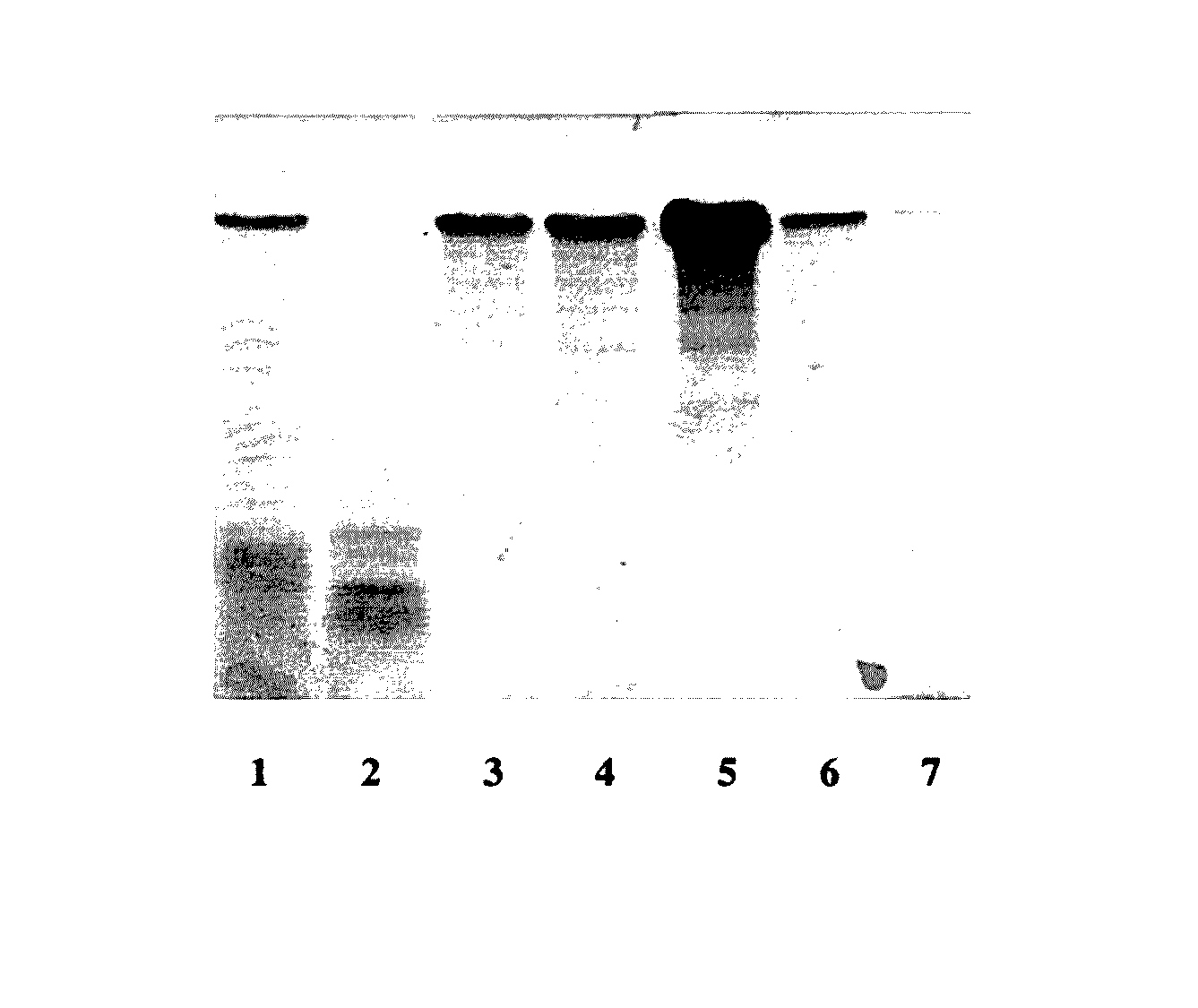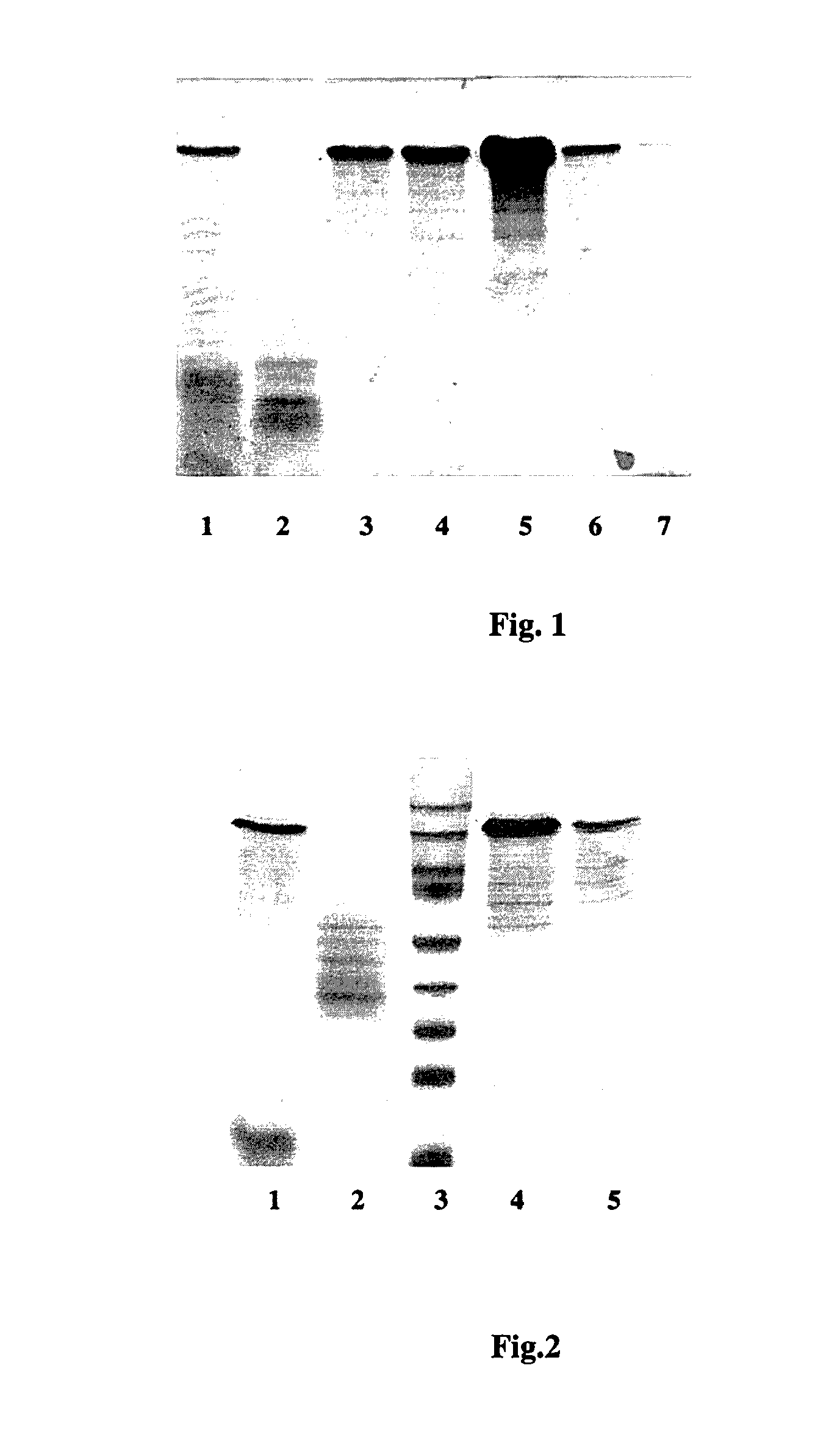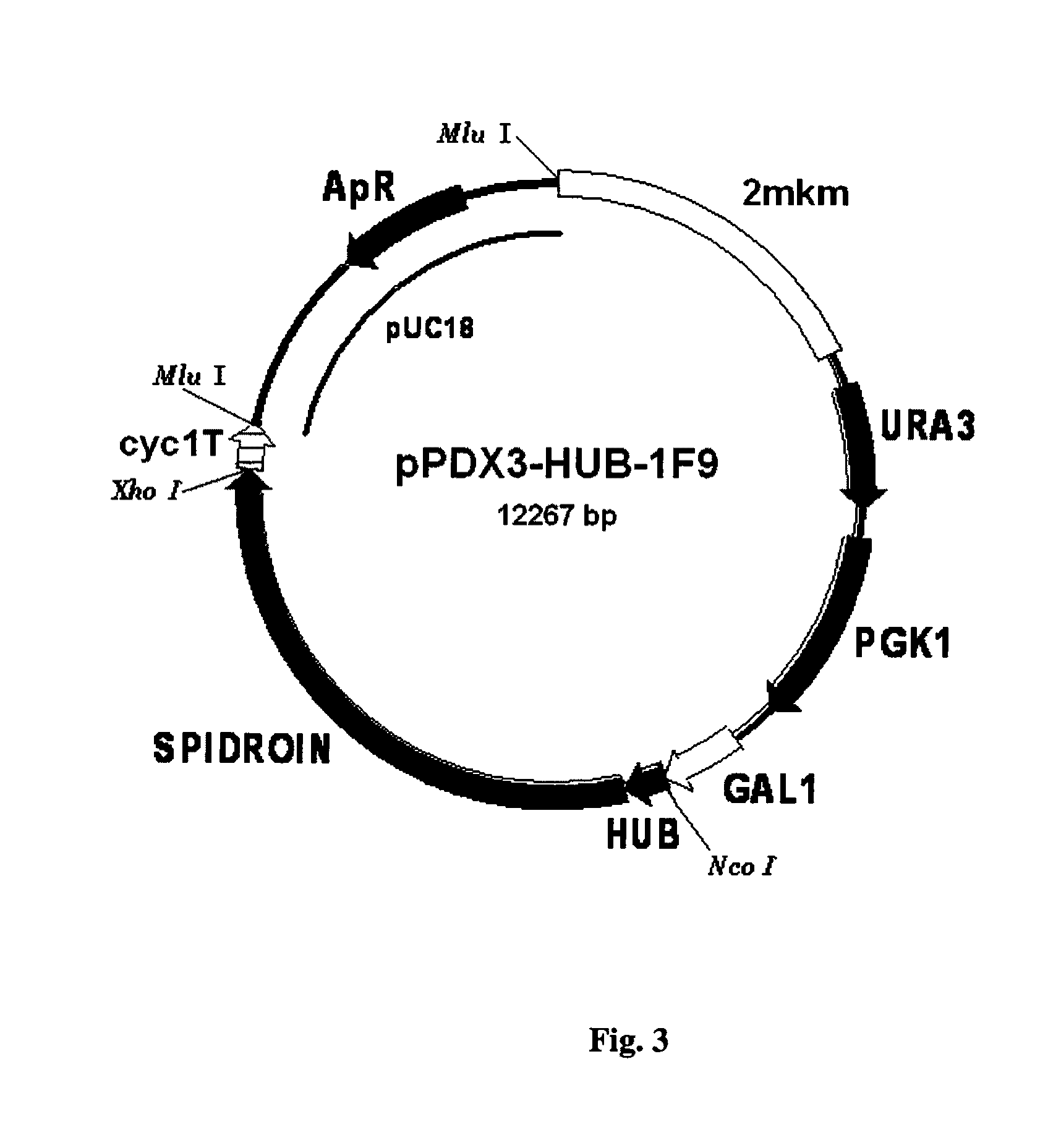Method for producing web protein, a fused protein, recombinant DNA, an expression vector, a host cell and strain-producers
a web protein and fused protein technology, applied in the field of biotechnology, can solve the problems of preventing the production of spider silk in the quantity sufficient not only for studying its structure and properties, and the expression level achieved is rather low
- Summary
- Abstract
- Description
- Claims
- Application Information
AI Technical Summary
Benefits of technology
Problems solved by technology
Method used
Image
Examples
example 1
Construction of the pPDX3-HUB Vector
[0109]A structural gene of the yeast ubiquitin was amplified in a polymerase chain reaction using as a matrix a chromosomal DNA of the S. cerevisiae Y618 laboratory strain [Kartasheva et al., 1996, Yeast, v. 12, 1297-13] isolated by the method according to Sidoruk [Sidoruk et. al., 2008, “Actual problems of genetics, radiobiology and radioecology”, Collected theses and reports, Dubna, JINR, p. 100]. N513 (5′-ataccatggaacatcatcatcatcatcatggaggcatgcagatcttcgtcaagactttga (SEQ ID NO: 28)) and N514 (5′-actggatccacctcttagccttagcacaac (SEQ ID NO: 29)) were used as amplification primers. The amplified DNA fragment of 510 base pairs was eluted from the agarose gel using the Qiagen kit (Qiagen, Cat. No 28706), treated with NcoI and BamHI restrictases, and cloned in the pUC18x-GAL1-NcoI laboratory plasmid cleaved at the same sites and carrying the HindIII / NcoI DNA fragment encoding the GAL1 gene promotor region of S. cerevisiae yeast. As a result, the p101-2...
example 2
Construction of the pPDX3-HUB-1F9 Expression Vector
[0111]The pPDX3-HUB-1F9 expression vector (FIG. 3) was obtained as a result of cloning the BglII / XhoI DNA fragment of the pUC21-1F9 laboratory plasmid of 36,000 nucleotide pairs, comprising the gen of 1F9 protein, in the pPDX3-HUB vector whose DNA was cleaved at the sites of BamHI and XhoI. As a result of cloning, the pPDX3-HUB-1F9 expression vector was obtained wherein the structural gene of 1F9 was fused with the ubiquitin-encoding structural gene within a single reading frame. The vector was used for expression of 1F9 in S. cerevisiae yeast cells.
example 3
Construction of the pPDX3-HUB-2E12 Vector
[0112]The pPDX3-HUB-2E12 expression vector was obtained as a result of cloning the BglII / XhoI DNA fragment of the laboratory plasmid pUC21-2E12 of 42,000 nucleotide pairs, comprising the gen of 2E12 protein, in the pPDX3-HUB vector whose DNA was cleaved at the sites of BamHI and XhoI. As a result of cloning the pPDX3-HUB-2E12 expression vector was obtained wherein the structural gene of 2E12 was fused with the ubiquitin-encoding structural gene within a single reading frame. The vector was used for expression of 2E12 in S. cerevisiae yeast cells.
PUM
| Property | Measurement | Unit |
|---|---|---|
| molecular weight | aaaaa | aaaaa |
| diameter | aaaaa | aaaaa |
| length | aaaaa | aaaaa |
Abstract
Description
Claims
Application Information
 Login to View More
Login to View More - R&D
- Intellectual Property
- Life Sciences
- Materials
- Tech Scout
- Unparalleled Data Quality
- Higher Quality Content
- 60% Fewer Hallucinations
Browse by: Latest US Patents, China's latest patents, Technical Efficacy Thesaurus, Application Domain, Technology Topic, Popular Technical Reports.
© 2025 PatSnap. All rights reserved.Legal|Privacy policy|Modern Slavery Act Transparency Statement|Sitemap|About US| Contact US: help@patsnap.com



